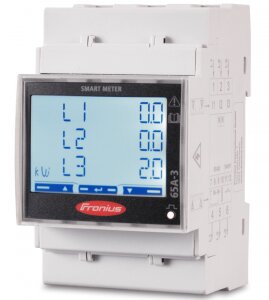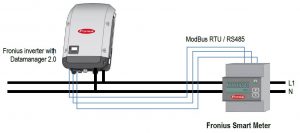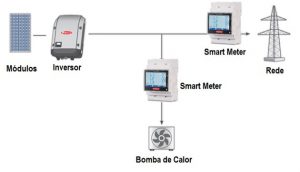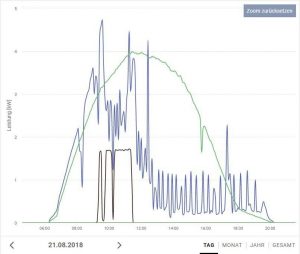With the technological level of inverters reaching great heights, it is now a reality for all those who have their own generation power monitor the energy generated by these equipment remotely, online, and intuitive, like this how is it in portal Solar.Web. To complement the monitoring experience, and delve even deeper into the details of your installation, it is possible to monitor, in addition to photovoltaic generation, its consumption. This functionality is obtained through the equipment Smart Enter TS. He It is a bidirectional meter, that allows view and control the different energy flows of the photovoltaic system, registerr consumption curves in your history, and allows you to optimize the installation’s self-consumption.

All data collected for the Smart Meter TS stay stored on the portal Solar.Web, where they are complemented with data from the inverter itself, such as power, generation, etc.

The communication of Smart Meter TS is already fully integrated into the inverter, thanks to the communication board Datamanager 2.0, present in all inverter lines Fronius. This connection is made via the protocol modbus RTU. Installing this smart meter is very simple and straightforward, following the instructions and recommendations in the manual. But before its installation, It is necessary to understand the differences between each of the possible topologies. For each topology which installs the Smart Meter, visualization of consumption data in the portal Solar.Web differs, which can be registereds consumption data for all loads in the installation, or just for a specific load or set of loads. These installation topologies are called “power point” and “consumption branch”, respectively. The diagram below illustrates both topologies in the same project.

O Smart Meter listed as “1” was installed as a “power point”, thus recording the consumption of the installation in its entirety, which could be the consumption of the energy company, consumption simultaneously (self-consumption), or record the surplus that is converted into credits. In this topology, the Smart Meter records all energy flows in the enterprise. O Smart Meter number 2 is only recording the consumption of the set of loads for which it was destined. Thus, during monitoring, this set of loads will have its own curve for analysis, as illustrated in Ffigure 4. In this image, it is possible to visualize the generation curve (green), provided by the inverter itself Fronius; B.Curtotal consumption va (blue), which is recorded through the data acquired by the Smart Have it installed on thefood point pology; It is per end the curve consumption of a set of specific loads, recorded using Smart Meter data installed in the consumer branch topology.

This equipment understand, yet, several additional applications in addition to detailed consumption monitoring. It is possible, through this, to limit the power of energy injection into the electrical grid, for example. It is possible to find the Smart Meter TS in two models, differentiated by maximum supported currents. The first, Smart Meter TS 65A, performs direct measurements in 220V/380V, two-phase or three-phase installations, being compatible with various devices.sresidential and commercial facilities. And the second, the Smart Meter TS 5kA, performs measurements up to 5kA through current transformers, also for two-phase or three-phase installations, with an operating range from 220V to 480V.
new RDStationForms('interesse-em-cursos-articles-do-canal-solar-2a68fc32cce5530fe808', 'UA-145443047-1').createForm();














